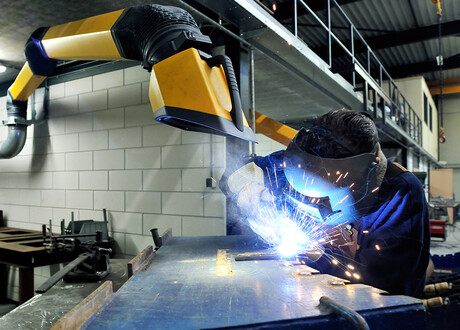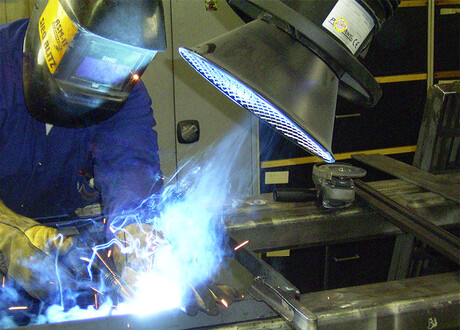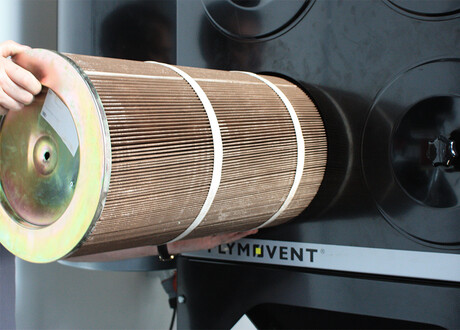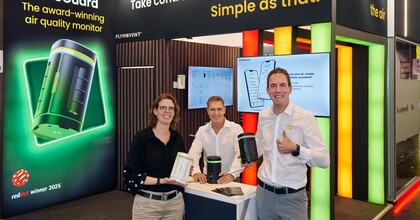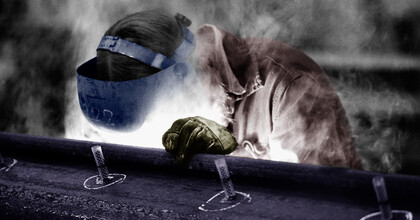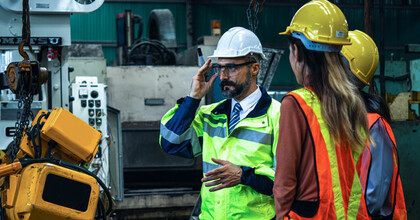In buildings where welding is carried out, temperature control and problems of airborne contamination are important, and the provision of clean air increases. Although fresh air is usually supplied by general ventilation, the sole use of general ventilation for airborne pollutant control in welding is usually ineffective.
It is more efficient if airborne contaminants are captured as close to the source as possible. According to health and safety organisations “Local exhaust ventilation (LEV) is the principal recommended method of fume control in the welding industry”.
What is LEV?
LEV is an extraction ventilation system that takes dusts, mists, gases, vapor or fumes out of the air so that they won’t be breathed in. Properly designed LEV will:
- collect the air that contains the contaminants;
- make sure they are contained and taken away from people;
- clean the air (if necessary) and get rid of the contaminants safely.
There are different types of LEV-systems, such as extraction arms, down- and backdraft benches, a portable welding fume extractor or mobile fume extractors. The most common elements of a simple LEV-system are:
- Hood(s) – to collect airborne contaminants at, or near the location where they are created (the source).
- Ducts – to carry the airborne contaminants away from the process.
- Air cleaner – to filter and clean the extracted air.
- Fan – which must be the right size and type to deliver sufficient ‘suck’ to the hood.
- Discharge – for the safe release of cleaned, extracted air into the atmosphere.
What the right type of LEV is for your specific welding processes depends on all kinds of factors. There may be a standard, ‘off-the-shelf’ system that would be suitable for you. However, it should be fit for purpose and capable of adequately controlling exposure.
The right type of LEV
If you have to make any changes to a standard system, or if there is no standard system for your industry, a clear specification will help you get what you need, and to avoid any misunderstandings with the LEV supplier. It can help you to write a specification of what you will need. For instance:
- describe the process, the contaminant, its hazards and the sources to be controlled, and how stringent the control needs to be. The important chemical and flammable properties of substances and products appear in the safety data sheet;
- require indicators to be fitted to show that the system is working properly;
- require the LEV to be easy to use, check, maintain and clean, taking into account other risks, e.g. accessibility, skin contamination and waste removal and filter changing without spreading contamination;
Once the LEV is installed
The law says that you need to make sure that the LEV carries on working properly, once it is installed. The user manual, logbook and training will help you do this. Most LEV-systems need a thorough examination by a competent person and a test once each year to make sure it works well and continues to protect your employees. Some LEV systems (such as those controlling more critical or high-hazard processes) need more frequent thorough examination and testing. If you have a LEV system that hasn’t been commissioned, you will need to have its performance tested to ensure that it is adequately controlling exposure.
Checking and maintenance
How often you check your LEV and how you do it will depend on how complicated the system is, how likely it is to fail, and the consequences if it does. A complicated LEV where the consequences will be serious if it goes wrong needs more frequent checks and maintenance.
As you gain more experience in running the LEV system you may need to change the frequency of your checks in the user manual.
Checks and maintenance tend to cover four types of parts:
- moving parts that may wear, such as fan bearings or filter shakers;
- non-moving parts, such as hoods, ductwork and seals (which can suffer physical or chemical damage and wear);
- parts that deteriorate with use, such as filters or flexible ducting; Especially with filters it can be critical to replace the filter on-time and to use the correct replacement filter, as it can have a big impact on the air quality, and thus the health of your welders. (see blog “What can I expect from a Plymovent filters”)
- items that need regular attention, such as removing sludge from a wet scrubber.
If the LEV can become contaminated with toxic substances, you may need to use ‘permits to work’ and formal method statements when people work on the system.

